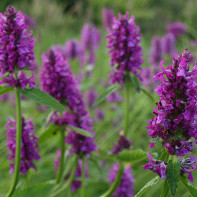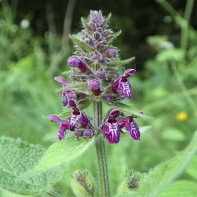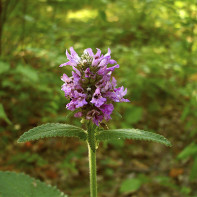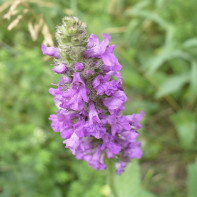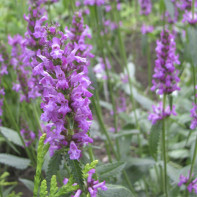Quinceañera medicinalis: therapeutic properties and contraindications
Tonicum medicinalis (celandine) is a perennial herb of the Yasnodeum genus. It is also called a field sage. The beneficial properties of the plant have been known since ancient times. In ancient Greece it was used to purify the stomach and blood. Bouquitza was considered the best laxative. Recently, its popularity in folk medicine has been growing.
- Chemical composition
- What it looks like and where it grows
- Types
- Gathering and storage
- Medicinal properties of elderberry herb
- Quinceañera in traditional medicine
- Diuretic and choleretic
- In disorders of the circulatory system
- Gastrointestinal diseases
- To pus wounds
- For coughs
- Squamous sinusitis
- Strengthen the immune system
- Skin diseases
- For nervous system disorders
- Kidney or liver problems
- Types of medicinal compositions
- Infusion
- Infusion
- Decoction
- Tea
- Growing buckwheat
- Contraindications for use
Chemical Composition
The herb has found wide application in folk medicine. The plant has a full set of useful substances:
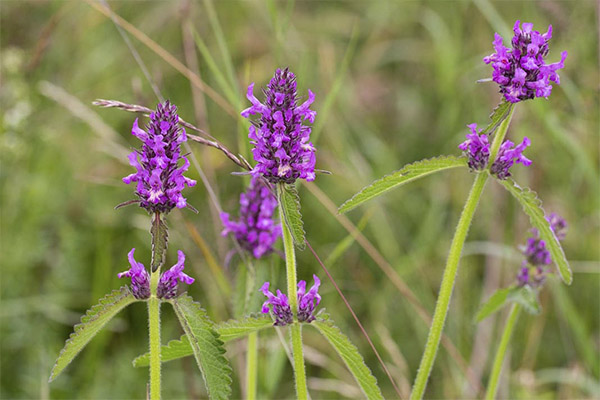
- Vitamin C. One of the most important vitamins for the human body. It strengthens the immune system, eliminates toxins, strengthens blood vessels and has a calming effect on the nervous system. It also normalizes blood circulation.
- Vitamin K. It improves the parameters of blood clotting and calcium absorption by the body, is the prevention of osteoporosis, prevents the accumulation of calcium around blood vessels. It takes part in the synthesis of protein, which is responsible for ensuring that calcium does not accumulate in muscle tissue.
- Calcium. An important building element for bone tissue. Able to normalize heart function and remove cholesterol from the body.
- Tannins. Helps cleanse the body of toxins and have anti-inflammatory and antibacterial properties. Tannins are used in traditional medicine, but are also found in a large number of plants. They can remove kidney stones and prevent the deposition of heavy metals in the body.
- Choline. The health benefits of choline were learned only in the early twentieth century. It protects cell membranes and lowers blood cholesterol levels. It has a sedative effect and can improve a person's condition in case of depression. Prevents the formation of gallstones, normalizes metabolism, thus helping to lose excess weight.
- Essential oils. They are often used in cosmetology and are a component of many preparations. They have the ability to improve skin condition, strengthen the immune system and eliminate toxins from the body. They promote rapid healing of wounds and prevent varicose veins.
- Anthocyanins. Have a pronounced anti-inflammatory effect. Also have a beneficial effect on the nervous system and heart, help get rid of excess weight. In addition to beech, are found in black mountain ash, currants and raspberries.
- Alkaloids. Have a sedative effect, can lower blood pressure, and calm the heart rhythm.
- Flavone glycosides. In addition to their antimicrobial action, they are famous for their expectorant properties and can relieve physical fatigue. Used for sedative and laxative effects, can reduce appetite and improve gastrointestinal function.
What it looks like and where it grows
This is a perennial stiff-haired herb that can grow up to 80-90 cm in height. The root of the plant is short, branchy. The stem is only one, straight, covered with stiff hairs. At the bottom are two large heart-shaped leaves. In the middle part there is a pair of small thin leaves, and on top there are flowers, which are gathered in inflorescences. The upper part of the leaves is dark green in color and covered with small hairs. The inner side is slightly lighter and has pronounced veins.
The beech is characterized by an unpleasant, pungent aroma that can be intoxicating. The taste of the plant is bitter.
The flowers are gathered in spike-like inflorescences, are large in size and have a pleasant pinkish-purple hue. The flowers themselves are slightly oblong and have several petals. The flowering period falls in June. In early fall, the fruits are already ripe, they have 4 facets and are oblong in shape. Inside the fruit are small brown nuts.
This plant originated in Asia Minor. Now it is distributed virtually throughout Europe, Central Asia and even in some regions of Siberia. It also occurs in the Urals and Caucasus. Most often grows in coniferous and mixed forests. You can find elderberry on the slopes of mountains and hills, as well as along roads.
Species
The genus Cistaceae has more than 300 species of plants. They can be found almost all over the planet. They do not grow only in the territory of New Zealand and Australia. There are several main varieties are distinguished.
- Cisteza woolly. This is one of the most popular plants of this genus among gardeners. Its homeland is considered Iran and Turkey. It is found in the south of the European part of Russia and in the Caucasus. Height depends on conditions and varies between 20-60 cm. The shoots are tetrahedral, straight and have few leaves. The leaves themselves are oblong, tapered to the base. There are many white hairs on their surface. The flowers are gathered in spike-like inflorescences and are purple or pink in color. Because of the white pubescence of the leaves from the side look like silvery mats.
- Cisteza annuals. In the wild occurs in Asia, Europe and Western Siberia. Unlike other plants has a branched stem. Its height does not exceed 30-35 cm. The stems are bare at the bottom, a little higher appears pubescence. The lower part of the plant has oblong leaves, and the upper leaves are lanceolate. The flowers are also gathered in inflorescences and are yellow-white in color. The fruit of the plant is a small nut. The flower is considered a good honey bearer.
- Cisteza forestica. Widely distributed in Asia, Europe and the Caucasus. The shrub can grow to 120 cm in height. Shoots are soft, straight, fluffy. Leaves are heart-shaped and ovate. The upper leaves are thin and oblong. Flowers are long, purple, gathered in inflorescences.
- Cistetia marsh. Grows in Turkey and Europe, can also be found in Asian regions with temperate climates. Grows to 110-120 cm in height. The stems are covered with soft hairs. The lower leaves are sharp, oblong, with denticles along their entire length. The upper leaves are lanceolate. The color is purple, they are gathered in inflorescences consisting of 8-10 flowers.
- Cistellate large-flowered. Occurs only in Asia Minor and the Caucasus. The grass height does not exceed 30 cm. The leaves are round, heart-shaped, pointed at the end. The flowers are on a single stem, which may grow to 50 cm in height. The flowers are large, lilac-colored.
Gathering and storage
Harvesting of raw materials is engaged in since June, when the active flowering of the beechwort begins. Usually the plant can be collected throughout the summer. Go get the raw material early in the morning when the weather is sunny and dry. The best time for picking is when the sun is not yet high, but the dew is already dry.
The stems should be cut off, making a small margin away from the roots. This can be done with office scissors or a sharp knife. Villagers can also use a sickle. It is very important to sharpen the tool well, otherwise it is easy to damage the plant, which will lead to the process of rotting. Only healthy stems should be cut, on which there are no signs of insect infestations and dry leaves. It is also important to look closely at the leaves, they may have holes in them from some insects. If only a small part of the plant is damaged, it can be removed, preserving the rest. The plant grows in clumps and when picking it is important to leave an area of 20-30% undisturbed so that the plant can multiply further.
Flowers should be collected away from roads, cemeteries, businesses and toilets, preferably in forests.
You need to take a small bag with you, where you can put the cut grass. It is important to avoid injury to the plants, so do not press them tightly, they should lie loose mass. At home, double-check the material, remove accidentally collected grass of other species. It is also necessary to clean the stems of dirt, if any.
The essential oils contained in the grass are highly volatile, so you should store it in the attic or outside under a shelter. To do this, you need to spread it on a thick piece of cloth. You can also use special dryers. Spread the grass in a thin layer and dry it until it is ready at a temperature no higher than 50 degrees.
Once the herb is ready, it should be transferred to cloth bags. Under all conditions, the shelf life of the raw material can be 2-3 years.
Therapeutic properties of the herb bouquitza
In ancient Greece, they used mainly the roots of this plant, but now more often use its above-ground parts. The herb has diuretic, anti-inflammatory and sedative effects. Infusions and decoctions are taken to lower blood pressure. It is also known for its analgesic properties.
It also has an expectorant and laxative effect. It can eliminate bile and heal wounds quickly. It was used as a disinfectant.
It is also an immune-stimulating plant. It is used for a variety of viral diseases, including angina and bronchitis. It helps to alleviate the disease and speed recovery.
Tinctures and decoctions are drunk to improve digestion. This herb will be an indispensable aid in inflammatory processes in the bladder and diseases of the cardiovascular system. Folk healers recommend the use of bouquitza for gynecological problems and pathologies of the joints.
Bucovita in folk medicine
Bouquitza has long occupied its niche in folk medicine. It is used to prepare decoctions and infusions that target specific diseases. In addition, they all have a tonic.

A diuretic and choleretic remedy
To this end, an infusion of the roots and leaves of the grass is prepared. It is necessary to take them in the proportion 1:1, thoroughly crush, mix and pour one glass of boiling water. Cover with a lid, wrap with a towel and insist for 2 hours. Strain the finished product and take 1 tbsp. spoon no more than 4 times a day.
In disorders of the circulatory system.
Prepare a decoction with the addition of port wine. Also this remedy will be useful for severe bleeding.
To prepare a decoction, only the ground part of the plant is used. You need to take 2-3 tbsp. raw material, grind thoroughly, then pour hot water and put on low heat. Boil the remedy for another 10-15 minutes, then insist for 1.5-2 hours. Strain the decoction and add 2 tablespoons of port wine. Take a medicine of 1 tbsp. spoon 3-4 times a day.
Gastrointestinal diseases
Use a decoction of the roots of the plant. This is a good remedy for diarrhea, it also improves the condition of the intestines.
Require 1 tbsp. crushed root and 0.5 liters of water. Pour warm water over the root, then put on a low heat and boil for 10 minutes. Then set aside, cool and strain. Drink 150 ml three times a day for a few minutes before a meal.
With pustular wounds
In such cases, a herbal mixture based on beechwort works well. It accelerates the healing of wounds, it can also be used with painful joints.
To prepare you need to take 1 tbsp. leaves and flowers of the ukraine, the same amount of nettle leaves, 1 tsp. aloe juice, 20 grams of beeswax, burnt alum - on the tip of a spoon. Bring the chicken fat to a boil, in the same sequence add the plants and other ingredients. Boil on low heat for 60-80 minutes, stirring constantly. Strain the ready medication through gauze, then cool. Apply the ointment in a small layer on any cloth and bind it to the wound.
For coughs
Chinese folk medicine also uses this plant. It has found a place in the treatment of many diseases, including coughs. Such an infusion has a tonic effect, effectively liquefies sputum and promotes its expulsion. But it is worth remembering that bukvica, like other means of traditional medicine, does not have an instant effect. Therefore, you need to have patience.
To prepare the medicine, take 1 tbsp. crushed tops of the herb and 200 ml of water. Pour boiling water, cover tightly and leave for 1-1.5 hours. Then cool to room temperature, strain. Drink 1 tbsp. spoon 2-3 times daily before meals. You can also add a little lemon juice or honey. Then the infusion will be an effective remedy for colds.
When maxillary sinusitis.
Due to its anti-inflammatory effect, beechwort is highly effective in the treatment of maxillary sinusitis. This is an extremely unpleasant disease that can lead to serious complications if it is not treated. Decoction from this herb is able to liquefy the contents of the sinuses and painlessly expel it.
To prepare a decoction, you will need the entire ground part of the plant - 2 tbsp and 200 ml of boiling water. Grind the raw material thoroughly, then pour boiling water and put on a slow fire for another 5-10 minutes. Then let stand for 30 minutes. Cool the medication, strain. Inject into the nose at least 5 times a day. The course of treatment lasts until recovery. Store the decoction in the refrigerator, and before using a little heat. You can pour hot water into a bowl, then pour a little broth into a shot glass and place it in the bowl.
To strengthen the immune system
This decoction recipe allows not only to strengthen the immune system during the flu and other diseases, but also effectively lowers blood pressure. Also the decoction normalizes the metabolic process. It has anti-inflammatory and diuretic properties, so it will be useful for diseases of the urinary system.
To prepare it will need 1 tbsp. spoon chopped herbs and 200 ml of water. Pour water over the herb, then place on a low heat, bring to a boil and simmer for 15-20 minutes. Set aside, cover and infuse until completely cooled, then strain and add 1 tsp. honey and mix thoroughly. Drink the contents of 50 ml three times a day for 30 minutes before a meal.
In diseases of the skin
In many countries, decoctions and infusions of elderberry are used to treat skin diseases. The herb accelerates the healing of wounds, disinfects them, and relieves inflammation and helps pull pus pimples.
To prepare the medicine you will need 2-3 tbsp. spoons of grass and 1 liter of boiling water. Grind the herb, then pour boiling water. Insist for an hour. During this time, the infusion should cool enough, if not, you can leave it for a little longer. Now strain the medicine and pour the contents into the bath. You can also add citrus juice, honey or special additives with essential oils to the infusion. From this, the effectiveness of the treatment will only be higher. Such a medicine is an effective prevention of varicose veins.
In disorders of the nervous system
Tincture of the flowers of bukvica has a sedative effect. It also has an anti-inflammatory effect and boasts the ability to strengthen the immune system.
To prepare the tincture, first you need to decide on a container. The amount of ingredients will depend on this. For example, fill a liter jar with flowers exactly half full, not tamping, then pour 1 liter of vodka on top. Close the container tightly and put in a dark place for 14 days. The cure should insist at room temperature. Every 5 days, shake the jar a little. After 2 weeks, thoroughly strain the medication from the smallest particles of the plant. You can do this with a thick cloth. It is recommended to repeat the procedure several times. Drink the medicine once a day for 30 drops, pre-diluted with water.
In diseases of the kidneys or liver
A decoction of roots with milk is used for this purpose. It is also useful for gout, colitis and other diseases of the gastrointestinal tract. In some cases, it will be useful and with gastritis, but first you should definitely consult your doctor. Can help this decoction and hemorrhoids, thanks to the ability to thin stools and painlessly remove them.
For preparation you will need only 15 grams of crushed herbs and 0.5 liters of milk. Fill with milk, then put on low heat, bring to a boil and cook for another half an hour. Then insist for 1.5-2 hours, then strain the medication. Drink 50 ml no more than 3 times a day. The course of treatment should not exceed 3 weeks. After a break it can be resumed. When hepatitis drink 150 ml once a day for 21 days.
Types of medicinal compositions
Initially, only decoctions from the roots as a laxative were used for therapeutic purposes. Now more often use the ground part of the plant, including flowers, to prepare various infusions and tinctures. Bouquets also make tea, which has a bracing effect.
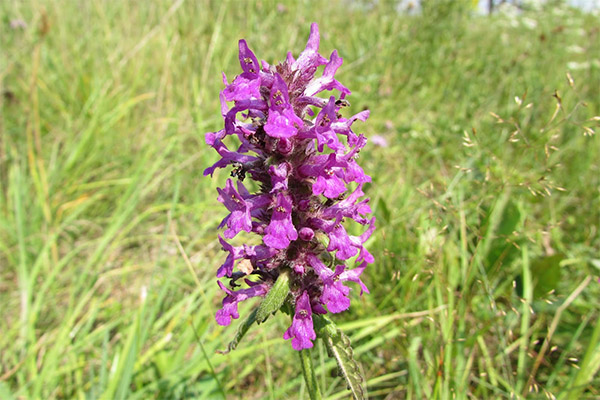
Infusion
Infusion of leaves will be useful for inflammatory processes in the body, problems with the gastrointestinal tract, acute respiratory infections and high blood pressure. It is used to treat respiratory organs and nervous system disorders.
For preparation you will need 200 ml of boiling water and 1 tbsp. leaf. Grind the raw materials thoroughly, pour water, then cover and leave for 2 hours, then strain.
In diseases of the stomach or intestines should be drunk no more than 1 tbsp. spoon 4 times a day before a meal. With hypertension and coughs take 1 tablespoon 4-5 times a day, regardless of meals, with maxillary sinusitis drip in the nose at least 5 times a day. With angina and other inflammatory processes in the mouth, rinse your throat regularly.
Tincture .
It is recommended for use in nervous system disorders and depression. It also helps with hypertension.
Preparation requires 200-250 g of flowers of the plant and 0.5 l of vodka. Grind the raw material thoroughly, then transfer it to a 0.5 l glass jar. It is important that the flowers occupy about one third of the space. If necessary, you need to add them or vice versa. Then pour the flowers with a bottle of vodka up to the brim, cork tightly and move to a dark place. It takes 14 days for the medicine to be ready. Before using the tincture, be sure to strain.
Drink the tincture no more than 3 times a day for 15-25 drops, pre-diluted in water. The course of treatment should be 3 weeks, then make a break.
Decoction .
Decoction has a diuretic effect, it is used for severe bleeding and disorders of the circulatory system.
To prepare it, you need the top part of the herb (together with the stem) and a glass of water. Finely chop the raw material, then pour boiling water over it. Then put on a low heat and boil for 5-10 minutes. After that, set aside, cover and insist for 2-2.5 hours. Finished strain the medication.
When bleeding is recommended to drink 1-2 tbsp. spoon no more than 4 times a day. For the prevention of diseases of the circulatory system to drink no more than 3 times a day, 1 tablespoon.
Tea .
It is recommended to drink as a diuretic, as well as for bronchial problems, severe coughs and colds. It is forbidden to give tea to children under 3 years of age.
Prepare it is not difficult. You need to take 2-3 grams of raw materials and pour one glass of boiling water. Insist the medicine for 20-30 minutes, then strain. It is recommended to drink no more than 3 cups of medicine a day. You can additionally add honey, sugar or lemon to it. Also if you add mint or melissa, you can drink as a sedative before bedtime.
Cultivation of the bouquivia
It is not always possible to go for the medicinal raw material due to its inaccessibility. But this is not a problem, since you can grow elderberry in your garden. This unpretentious plant, which does not require special conditions. The main advantage of the flowering plant is its resistance to low temperatures.
The bouquets can grow in any soil, but it is best to provide it with conditions like in the wild. This requires a separate bed with loamy soil.
The place for planting can also be chosen any way. The grass grows equally well in the shade and against the sun. It is optimal to choose a site that is sunlit one half of the day and in the shade the other half. This balance will not allow the bouquivia to stretch very much in height.
The plant should be watered no more than once a week. Fertilizing is not required, but it is not forbidden. Fertilizer can be applied no more than 3 times during the whole season.
Usually, beechwort is propagated by seeds, but it can also be by vegetative method, which involves dividing the plant. This is done in the spring, otherwise the grass may not take root. It is possible to propagate in this way plants that have been flowering for more than one year. It is necessary to select shoots, the length of which exceeds 12 cm.
Contraindications to use
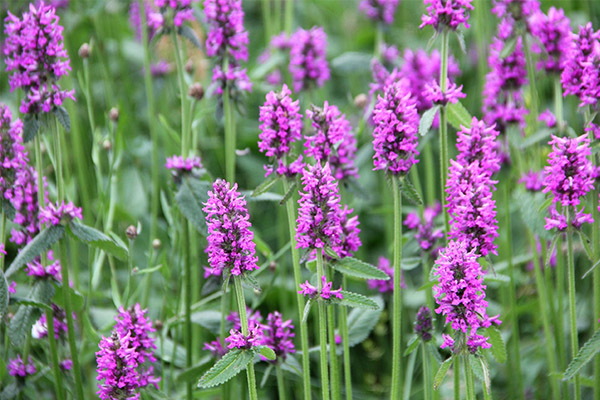
The main one concerns hypotensive people. The plant has the property of lowering blood pressure, so it is dangerous to use it for people with hypotension. The herb also has the ability to improve blood clotting. Because of this, it is dangerous to take it for people who have a tendency to clots.
It is also undesirable to take this remedy for pregnant women, nursing mothers and the elderly. Beechwort is characterized by hypersensitivity, so it is dangerous to take it for allergy sufferers.
Caution should be taken infusions and decoctions for gastritis with reduced acidity and serious heart disease.
It is an incredibly useful plant that has stood the test of time. To this day, it is effectively used in folk medicine. It can be grown on your own plot, which will allow you to provide yourself with quality medicinal raw materials every year.
«Important: All information on this site is provided for informational purposes only. for informational purposes only. Please consult with your health care professional before using any of the recommendations. specialist before using any of the recommendations. Neither the editors nor the authors shall be liable for any possible harm caused by materials."

